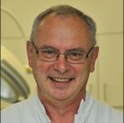Translate this page into:
Facial rehabilitation

*Corresponding author: Uwe Wollina, Department of Dermatology and Allergology, Städtisches Klinikum Dresden, Dresden, Germany. uwollina@gmail.com
-
Received: ,
Accepted: ,
How to cite this article: Wollina U. Facial rehabilitation. CosmoDerma 2023;3:67.
Researchers attempted to identify the parts of the face which have a particular importance for emotional expressions. Considering happiness – for instance – the most important action units are around the mouth: lip corner puller and parting of lips. However, the eyes should not be neglected.
Therefore, the face plays a peerless role in both verbal and non-verbal communication between individuals. A friendly and even better a beautiful friendly face can open hearts and doors.
But what happens if a trauma, infection, or a surgery causes asymmetries and functional disabilities? Such faces become stigmatized and cause additional pain and concerns for the patient. This results also in impaired quality of life.
Since ancient times, in particular surgeons – very early in India, during renaissance in Italy and Switzerland – became engaged to improve function and appearance of the face. New techniques to compensate the loss of facial parts like nose or ears were developed.
In many circumstances, plastic surgery still is the gold standard in facial rehabilitation. On the other hand, recent progress in minimal invasive techniques provides us an armamentarium to support facial rehabilitation without cold steel. It is like a marriage of traditional medicine and aesthetic medicine.
Botulinum toxin is a versatile tool in improving facial palsy. Soft-tissue fillers are of benefit in correcting volume loss due to traumata or skin disorders like morphea. Hyaluronidase injections can improve unsightly scars. Combining these minimal invasive techniques are useful to improve self-confidence and quality of life of affected patients. [Table 1] provides some examples.
| Medical condition | BoNT | Soft tissue fillers |
|---|---|---|
| Bell’s palsy | + | + (adjuvant to BoNT) |
| Facial lipatrophy (HIV and others) | − | + |
| Depressed scars | + (prevention) | + (adjuvant to laser) |
| Cleft lip | − | + (adjuvant to surgery) |
| Lip asymmetry | + | + |
BoNT: Botulinum toxin
However, before beginning the procedure, one must understand the underlying disease or condition. This is esthetic medicine at its best: To have the knowledge to recognize and deal with complex medical challenges and to master the techniques of aesthetic medicine to the best of our patients!





